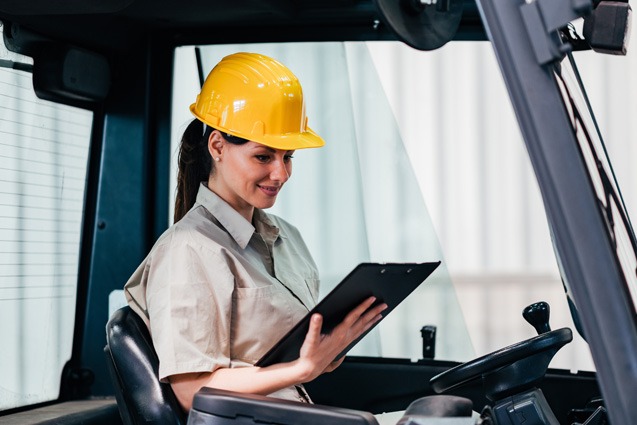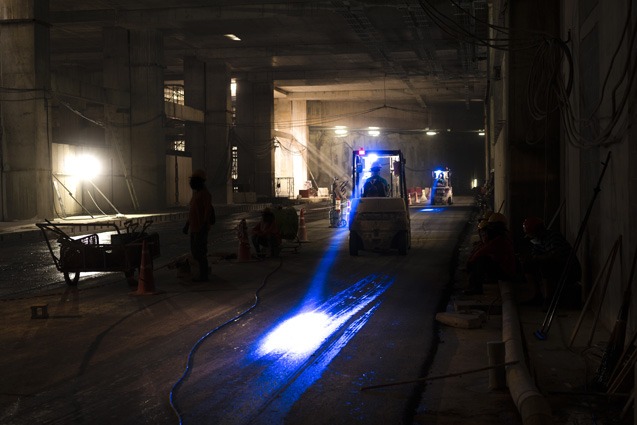
What Are The Most Important Forklift Safety Accessories?
Anyone employed in an industry that frequently utilizes forklifts is likely acquainted with the importance of safety. In an environment filled with row after row of stacked boxes, crates, pallets, etc., a forklift is necessary but can pose unique threats to the well-being of operators and nearby personnel. Hopefully, you, as a supervisor, have seen to it that every three years your forklift operators complete the authorization process, involving mandatory training. Furthermore, you may have educated your entire staff by demonstrating proper work environment and heavy machinery awareness. To make sure that your inventory, workers, and operators all exist together in a safe environment, the training just mentioned is critical. But it’s not enough! Are you considering the purchase of a forklift? Whether you’ve used one in the past or are new to the advantages and dangers of a forklift, it won’t hurt to study the below-listed equipment. The products you will see here may seem obvious to some, or even unnecessary. But they are neither. To extend the overall service lifespan of your equipment, utilize safety trained operators, create a healthier work environment, and have a more glowing safety record (OSHA will love that). Make sure that the safety accessories you see here are being installed and used properly.
Although the equipment you get mostly depends on your day-to-day operational needs, below is a list of forklift safety accessories that will suit most applications:
Daily Safety Checklists
Although forklifts are always manufactured with safety top-of-mind, operators must accurately follow safety protocols for maximum protection. OSHA requires forklift operators to inspect their equipment daily or after each shift. The latter is necessary for forklifts that have been assigned to round-the-clock use. If problems are discovered, the issues must be reported, and the vehicle removed from service immediately. Some of the daily safety checks may include checking fluid levels, leaks, tire condition, and functionality of finger guards.
Decals
You should install decals on every forklift truck in the fleet to remind operators to exercise safety at all times. For example, the decals may feature bright red lettering that reminds operators not to speed, wear earpieces, smoke, and use their cell phones during their shifts.


Back-up alarms, Strobe Lights, Blue lights, and Horns
Forklift truck back-up alarms allow your operators to warn other employees that a vehicle is near or in immediate proximity. Because OSHA requires the application of strobe lights in dimly lit environments, you will need to install forklift strobe lights if your warehouse has less light.
Another type of light you may need is blue light. This light is typically projected onto the floor and several meters ahead of the forklift, specifically in the direction of travel. Blue light warns other operators and pedestrians that a forklift is approaching.
Forklift horns are often needed to grab the attention of other people, especially pedestrians who are unaware that a piece of heavy machinery is quickly approaching them.
Seats with Hip Guards or Hip Restraints
Riding in your forklifts should be comfortable and smooth at all times. That’s why it is worth the investment to install ergonomically designed seats. In order to accommodate various operator needs and applications, C&C Lift Truck also offers hip guard and hip restraint systems.
Orange Seat Belts with Quick Belt Disconnect Features
Orange seat belts are a great safety feature for most warehouse forklifts. This useful add-on part helps optimize overall jobsite safety by enforcing accountability. These brightly colored seat belts are beneficial for safety managers as they make it significantly easier to monitor proactive seat belt use.
Fire Extinguishers
The OSHA 29 CFR 1910.157 standard requires companies to place portable fire extinguishers within the premises. This helps facilitate emergency action and fire prevention plans should the need arise. To increase forklift operator safety, it is a good idea to equip your forklifts with fire extinguishers.


Safety Harnesses for Order Pickers
When your employees operate order pickers, they should wear safety harnesses and close the handrail on the platform when moving. All of these elements are necessary to prevent falls from the order picker.
PPE and Safety Vests
Before your forklift operators begin their shifts, provide them with protective eyewear, steel cap boots, and safety gloves. Another important piece of forklift operator personal protective equipment (PPE) includes brightly colored safety vests. These high visibility safety vests are designed to increase awareness that everyone is in a work zone. The safety vests should be able to reflect light even in the presence of low-level lighting.
Back-up Cameras
Back-up cameras are designed to help your counterbalance forklift operators to reverse more safely. Today, these systems can even be combined with cameras that offer visuals of your forks.
Forklift Safety Trained Operators
Next on the list is not a physical safety accessory, but comprehensive forklift safety training programs that comply with strict OSHA standards. Here at C&C Lift Truck, our instructors can train your operators at your facility. We provide interactive hands-on training, conduct informative classroom sessions, and offer instructional resources. Our training materials cover proper handling of fuel and batteries, safe operating practices, and truck inspections. Your employees will then need to complete a written exam and individual operator evaluation. If they meet the passing grade, they will receive OSHA-certified training cards and other relevant certificates.
If you have questions about our forklifts and/or the availability of safety accessories, feel free to contact us today.


Sorry, the comment form is closed at this time.